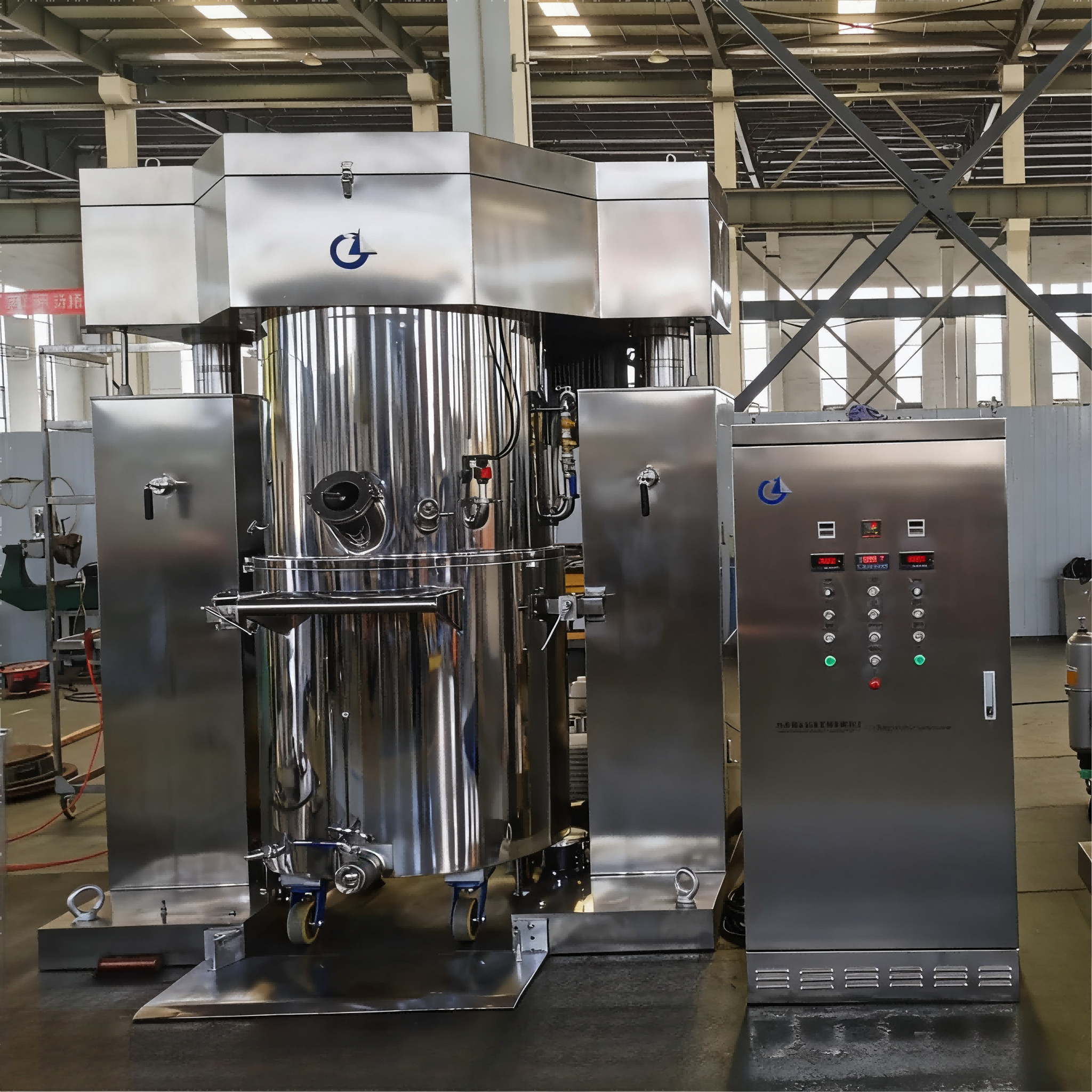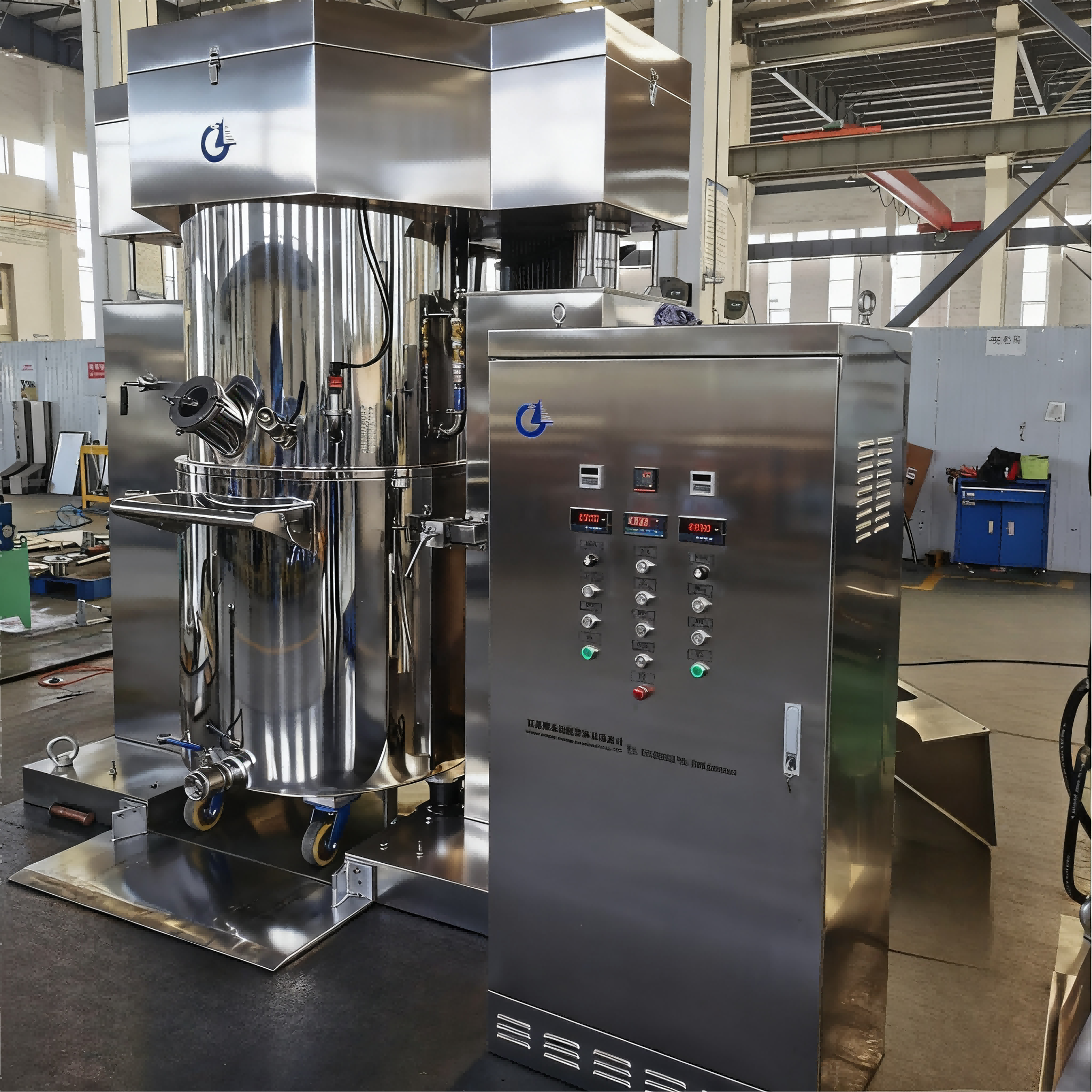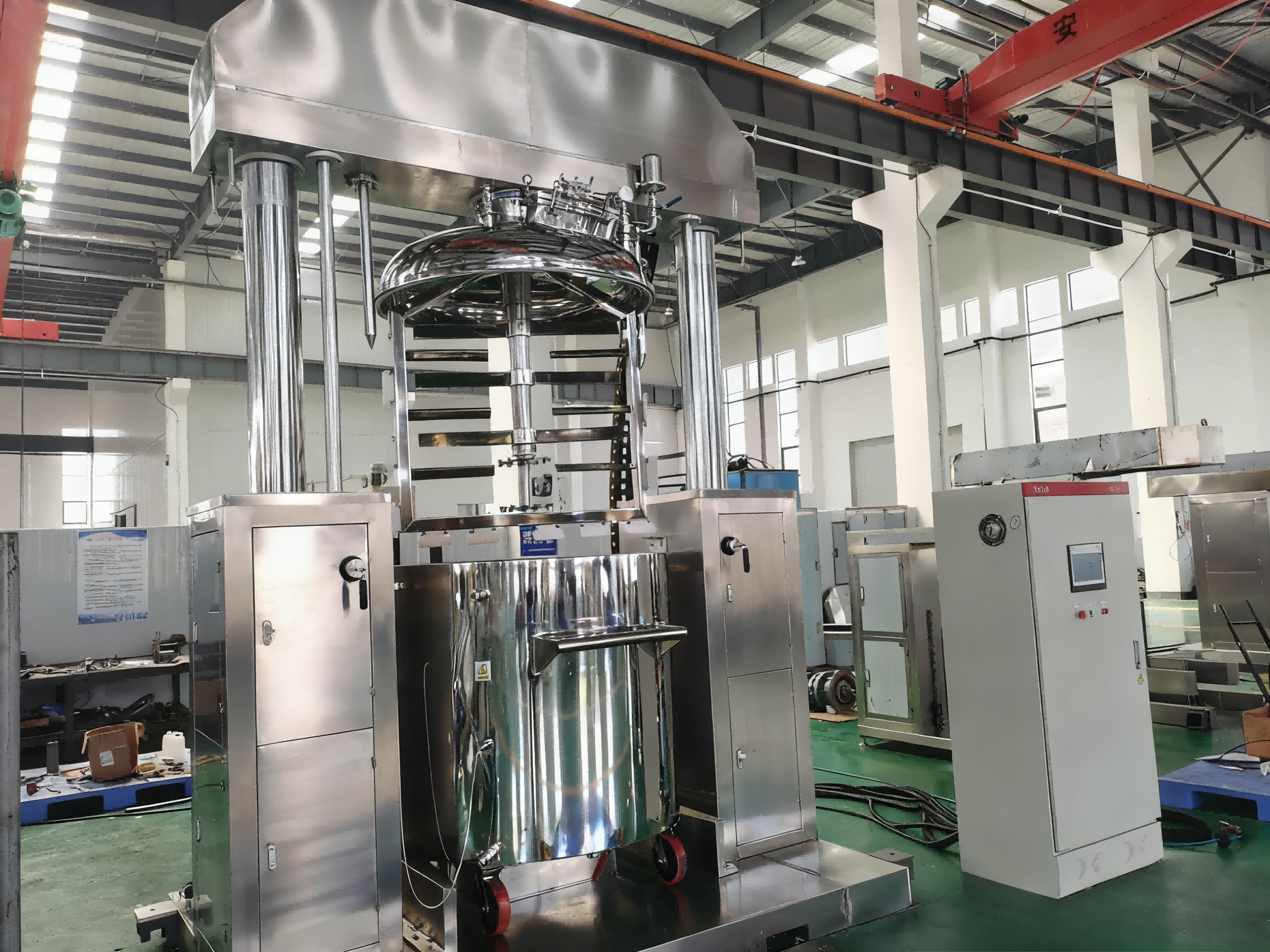The Working Principle of the Vacuum Homogenizer Emulsifying Mixer
The Working Principle of the Vacuum Homogenizer Emulsifying Mixer
The working principle of the vacuum homogenizer emulsifying mixer is rooted in the synergy of vacuum technology and high-pressure processing. By creating a vacuum environment, the equipment removes air and other gases from the mixture—this critical step directly enhances the quality and stability of the final product, as trapped gases often lead to defects like foaming or oxidation.
In practice, the process unfolds as follows: First, the mixture is introduced into the mixing chamber under pre-established vacuum conditions. This ensures no external air is reintroduced during material feeding. Next, high pressure (generated by a dedicated high-pressure pump or professional pressure-generating device) is applied to the mixture. This pressure acts on the material to break down large solid particles (e.g., agglomerated powders) and residual air bubbles, laying the groundwork for a uniformly consistent mixture.
As the high-pressure mixture is forced through a narrow gap orifice, it undergoes an abrupt pressure drop. This sudden change triggers two key effects: intense shear forces that split larger droplets into finer ones, and cavitation (the formation and rapid collapse of micro-bubbles) that further refines the mixture. Together, these effects result in the formation of ultra-fine droplets and a highly stable, uniform emulsion.
Structurally, the vacuum homogenizer emulsifying mixer typically features a double-wall design with vacuum insulation. This design serves two core purposes: maintaining the desired temperature (critical for emulsion stability) and preserving the vacuum pressure inside the chamber. Additionally, the inner wall of the mixing chamber is usually constructed from stainless steel or other corrosion-resistant materials—this ensures the equipment’s durability, prevents material contamination, and extends its service life.
The equipment’s versatility makes it suitable for a broad range of applications. It is widely used in the production of products requiring a creamy texture and uniform consistency, such as mayonnaise, salad dressings, and spreads. Beyond these, it also plays a key role in the food, cosmetics, and pharmaceutical industries—all fields where precise emulsification and homogenization are indispensable for guaranteeing product quality, safety, and shelf stability.
News
- Latest News
- Solutions
- FAQ
Recommend Products
-
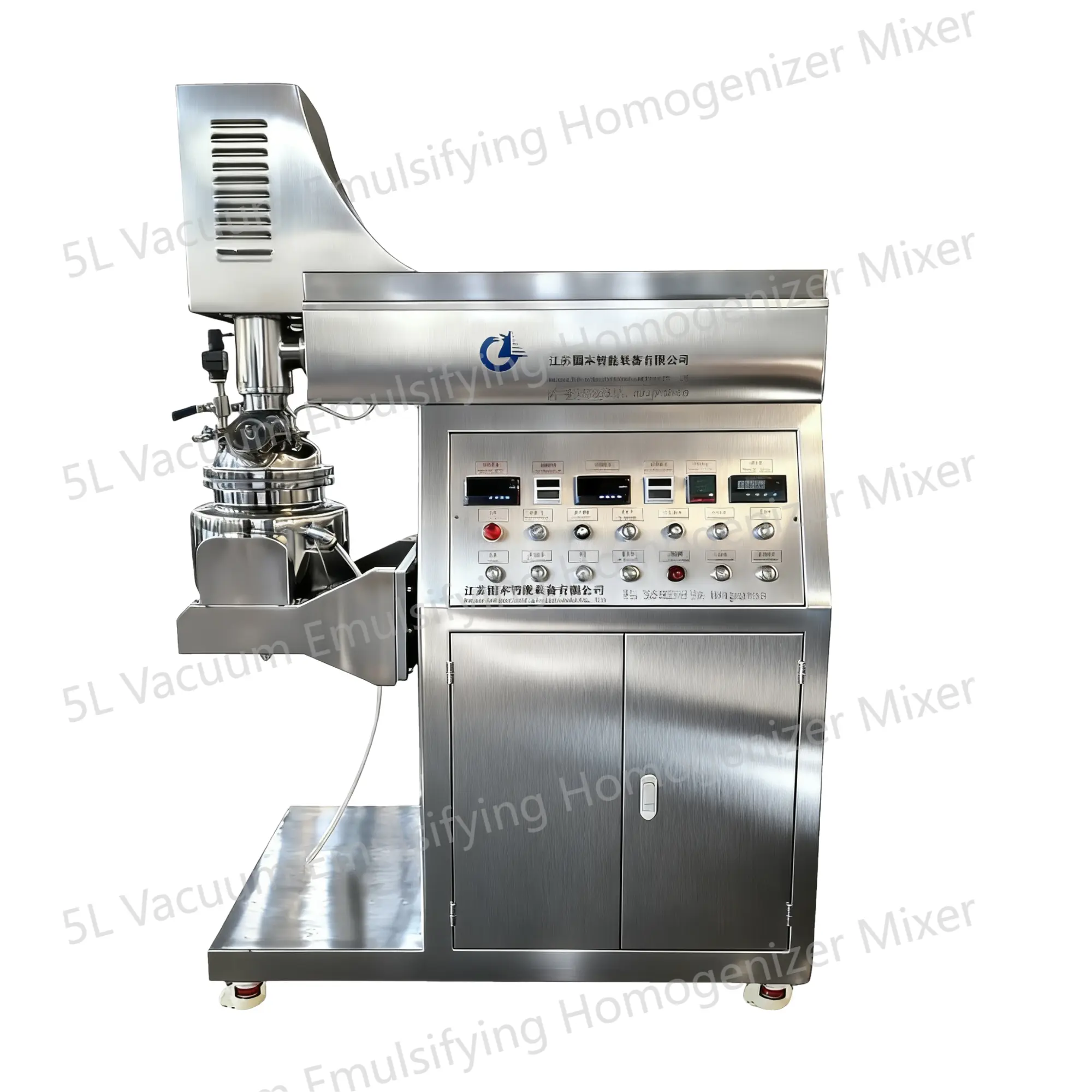 5L Vacuum Emulsifying Homogenizer Mixer
5L Vacuum Emulsifying Homogenizer MixerThe 5L vacuum emulsifying mixer is a device designed for emulsifying and mixing various substances in a vacuum environment. This equipment is equipped with a mixing tank with a capacity of 5 liters and is widely applied in industries such as food, pharmaceuticals, cosmetics, and pesticides.
-
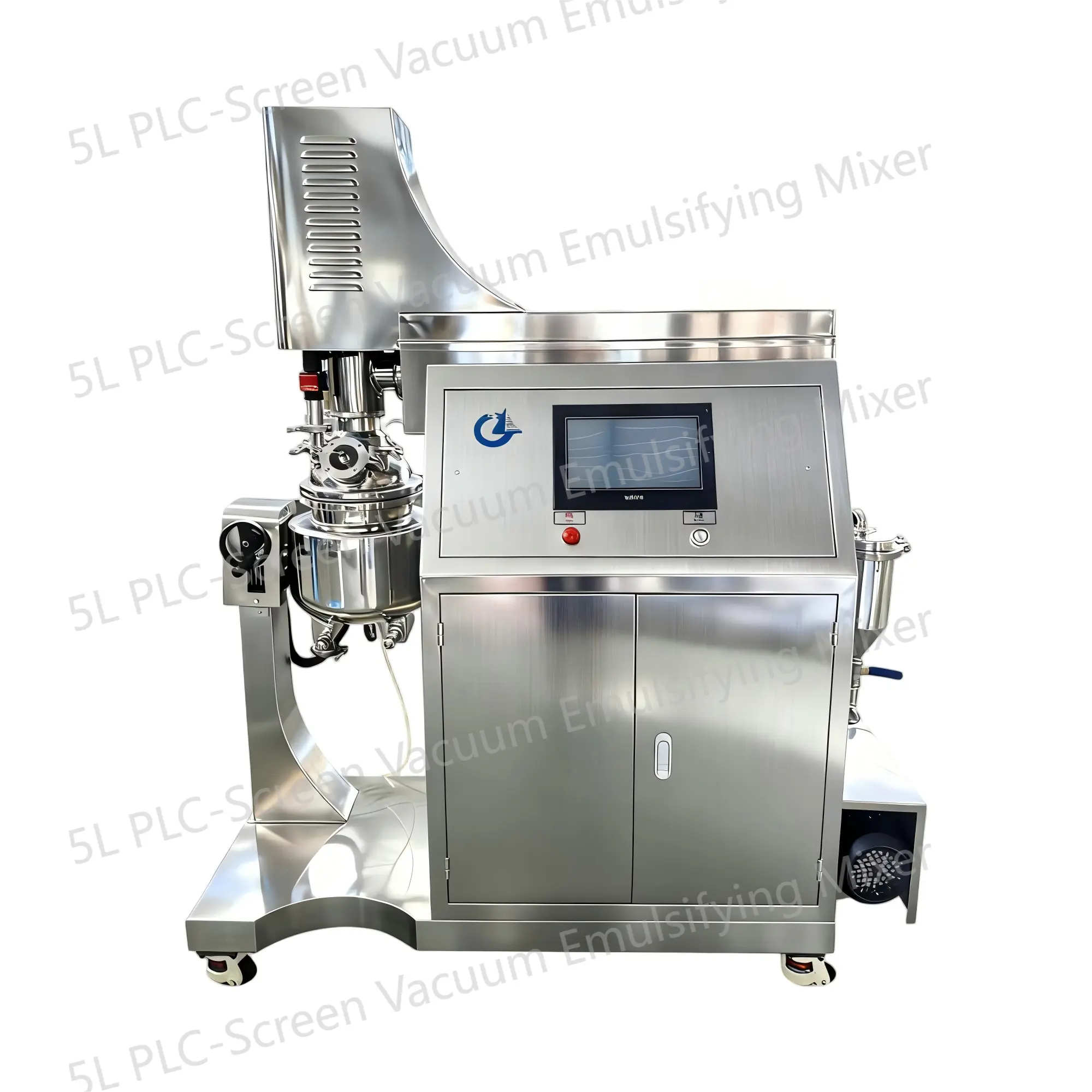 5L PLC-Screen Vacuum Emulsifying Mixer
5L PLC-Screen Vacuum Emulsifying MixerThe 5L PLC-Screen Vacuum Emulsifying Mixer is a device designed for emulsifying and mixing various substances in a vacuum environment. This equipment is equipped with a mixing tank with a capacity of 5 liters and is widely applied in industries such as food, pharmaceuticals, cosmetics, and pesticides.
-
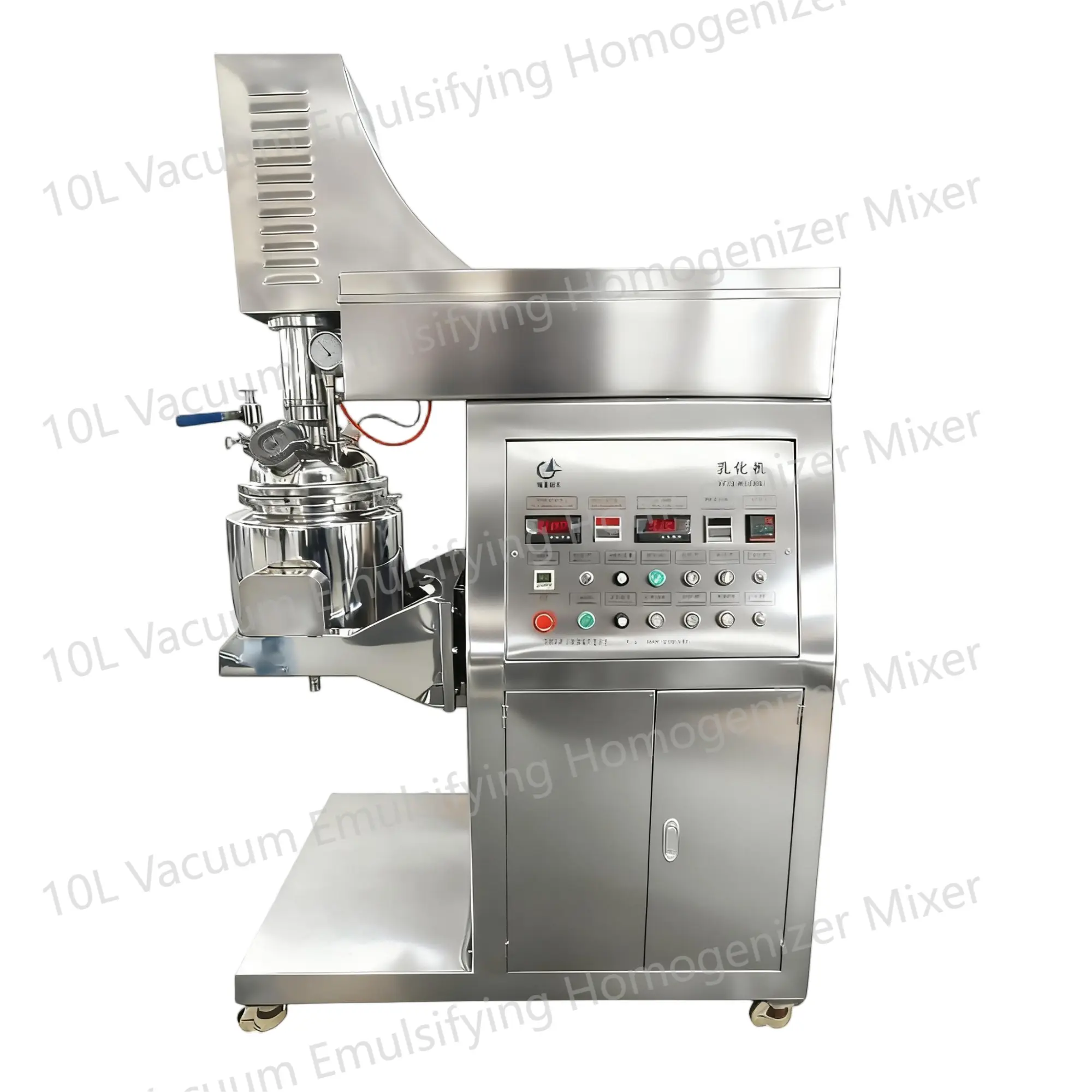 10L Vacuum Emulsifying Homogenizer Mixer
10L Vacuum Emulsifying Homogenizer MixerThe 10L Vacuum Emulsifying Mixer is a device used for emulsifying and mixing various substances in a vacuum environment. It is commonly used in industries such as food, cosmetics, and pharmaceuticals.


 English
English Russian
Russian French
French Spanish
Spanish Portuguese
Portuguese Korean
Korean Japanese
Japanese Thai
Thai